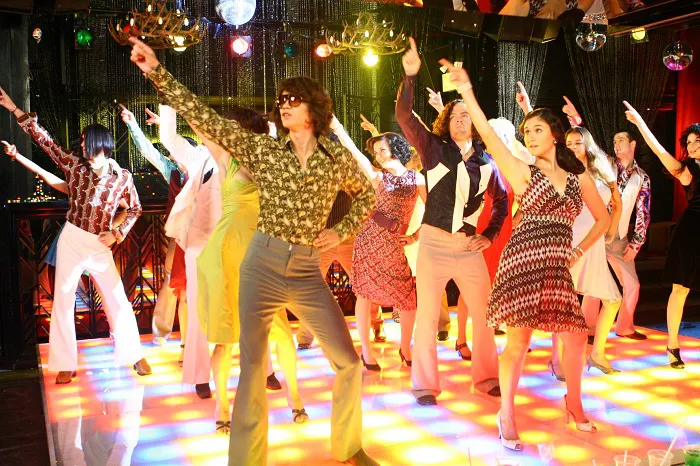Disco music, a genre that emerged in the 1970s, has always been synonymous with fun, dance, and a vibrant nightlife. The word “disco” itself conjures up images of dazzling dance floors, flashy outfits, and infectious beats that kept people grooving till the break of dawn. In this article, we embark on a journey to explore the evolution and impact of disco music, affectionately known as “Dolly Disco” to its devoted fans.
The Birth of Disco: A Sparkling Revolution
The disco movement was more than just a musical genre; it was a cultural phenomenon that left an indelible mark on the world. Disco, derived from the French word “discothèque,” meaning a nightclub or dance hall, found its roots in African American, Latin, and gay communities. These communities played a pivotal role in shaping the disco sound and its accompanying lifestyle.
The disco era is often associated with iconic venues such as Studio 54, where glittering disco balls illuminated the dance floor, casting a mesmerizing aura that captivated partygoers. At the heart of it all was the music – disco music, characterized by its pulsating rhythms, soaring vocals, and a steady, four-on-the-floor beat.
The Disco Beat: A Dancefloor Revelation
Disco music’s signature beat, often referred to as the “disco beat,” was a driving force behind the genre’s popularity. The disco beat is characterized by a steady, syncopated rhythm that invites dancers to move in synchrony with the music. This infectious beat, usually played at 120 beats per minute or more, created an irresistible urge to hit the dance floor and groove the night away.
One cannot discuss disco without acknowledging the role of the DJ. The DJ was the gatekeeper of the discotheque, responsible for selecting and mixing tracks that kept the dance floor packed. Pioneering DJs like Larry Levan and Frankie Knuckles are legends in the world of disco, having contributed immensely to the genre’s evolution.
Disco Fashion: Glitter, Glam, and Extravagance
Disco music wasn’t just about what you heard; it was also about what you wore. The disco fashion scene was a visual spectacle, with its glitzy and glamorous attire. Disco-goers donned flashy sequined dresses, bell-bottom pants, platform shoes, and vibrant, eye-catching outfits that shimmered under the dance floor lights.
One iconic element of disco fashion was the disco ball. These mirrored spheres hung from the ceiling, reflecting light in a dazzling display of glitter and glamour. The disco ball became a symbol of the disco era, representing the magic and allure of the dance floor.
Disco Divas: Vocal Powerhouses of the Era
The disco era produced a plethora of legendary vocalists, often referred to as “disco divas.” These women possessed powerful voices that soared over the pulsating beats, captivating audiences with their performances. Donna Summer, often hailed as the “Queen of Disco,” was one such diva. Her hits like “I Feel Love” and “Last Dance” remain timeless classics.
Gloria Gaynor’s anthem “I Will Survive” became an empowering anthem for many, while Grace Jones brought her unique androgynous style to the disco scene. These disco divas not only contributed to the genre’s musical landscape but also became fashion icons, setting trends with their bold and flamboyant looks.
Disco’s Influence on Pop Culture: Beyond the Dance Floor
Disco’s influence extended far beyond the confines of the dance floor. It permeated into various aspects of pop culture, leaving an indelible mark on music, fashion, and even film. The disco era saw the rise of disco-themed movies like “Saturday Night Fever,” starring John Travolta, which not only showcased the dance moves but also the fashion and the lifestyle associated with disco.
Moreover, disco music had a profound impact on the LGBTQ+ community. It provided a safe space for LGBTQ+ individuals to express themselves freely and embrace their identities. The disco scene was inclusive, welcoming people from all walks of life, and it played a pivotal role in promoting acceptance and diversity.
The Disco Backlash: The Demise of an Era
As disco reached its zenith in the late 1970s, it also faced a growing backlash. Some critics argued that the genre had become overly commercialized and formulaic, losing the authenticity that had characterized its early days. The “Disco Sucks” movement gained momentum, with events like the infamous Disco Demolition Night in Chicago symbolizing the growing anti-disco sentiment.
The backlash against disco also had socio-cultural undertones. Some critics accused disco of promoting excess, hedonism, and superficiality, arguing that it detracted from more significant societal issues. In many ways, disco became a scapegoat for the frustrations and anxieties of the era.
Disco’s Resurgence: Staying Alive in the 21st Century
While disco faced a downturn in the late 1970s, it never truly disappeared. Instead, it transformed and evolved, leaving a lasting legacy that continues to influence music today. Elements of disco can be heard in contemporary pop, electronic, and dance music, and its impact can be seen in the resurgence of disco-inspired fashion trends.
Artists like Daft Punk, with their hit “Get Lucky,” and Bruno Mars, with “Uptown Funk,” have embraced the disco sound, infusing it with a modern twist. These contemporary interpretations of disco demonstrate its enduring appeal and its ability to adapt to changing musical landscapes.
Conclusion
In conclusion, “Dolly Disco,” as affectionately referred to by its fans, is more than just a genre of music. It’s a cultural phenomenon that sparked a revolution in music, fashion, and dance. The disco beat, the dazzling fashion, the disco divas, and the inclusive spirit of the discotheque all contributed to its enduring legacy.
While disco may have faced a backlash in the late 1970s, it never truly disappeared. It evolved and adapted, leaving an indelible mark on the world of music and pop culture. Today, we can still feel its influence in the music we dance to, the fashion we wear, and the spirit of inclusivity and acceptance that it championed.

